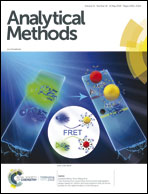Fiber-optic evanescent wave spectroscopy (FEWS) of crystals from a urine sample as a tool for evaluating the chemical composition of kidney stones
Abstract
One in every 20 people develops kidney stones at some point in their life. Knowing the kidney stone's chemical composition has a great importance in treating the disease and especially in reducing its recurrence rate. Fiber-optic Evanescent Wave Spectroscopy (FEWS) is a powerful technique based on infrared (IR) transmitting optical fibers that can be very useful for the diagnosis of biological materials. In the present study, we investigate the option of using FEWS to determine the kidney stone's composition based only on a urine sample. We examined both urinary calculi and urine samples that were taken from patients. We determined their non-organic composition using the FEWS technique. The protocol we developed allowed us to measure micrograms of crystals extracted from the urine sample. Our findings revealed partial correlation between the composition of the crystals in the urine and the chemical composition of the urinary calculi. Thus, FEWS has the potential to partially predict the composition of the urinary calculi based on a simple urine test.

- This article is part of the themed collection: Analytical Methods Recent HOT articles


 Please wait while we load your content...
Please wait while we load your content...